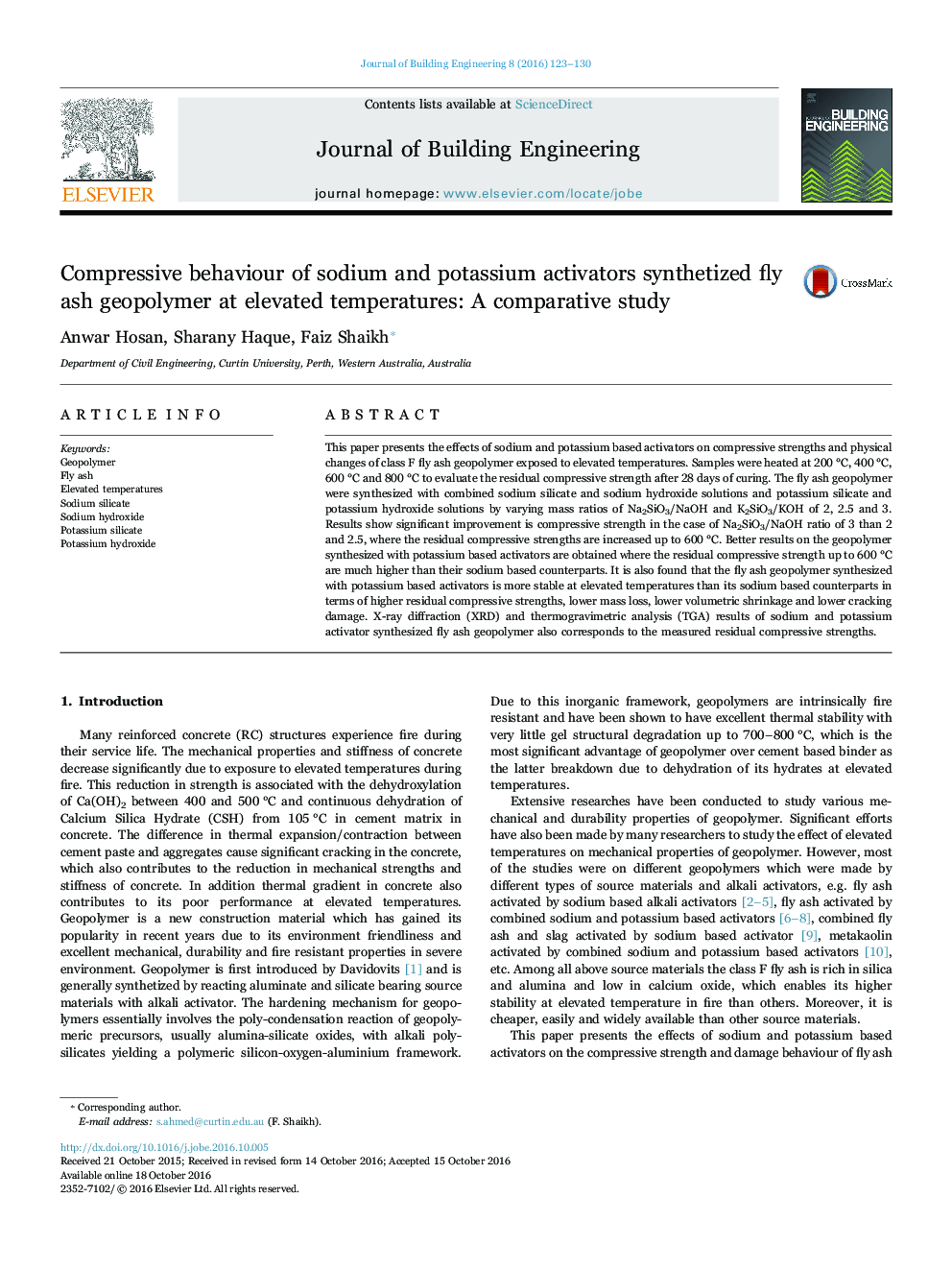| Article ID | Journal | Published Year | Pages | File Type |
|---|---|---|---|---|
| 4923213 | Journal of Building Engineering | 2016 | 8 Pages |
â¢Compressive behaviour of fly ash geopolymer at elevated temperatures are evaluated.â¢Effects of Na- and K-based alkali activators on above geopolymer are also compared.â¢K-based activator performed better than Na-based counterpart at elevated temperatures.
This paper presents the effects of sodium and potassium based activators on compressive strengths and physical changes of class F fly ash geopolymer exposed to elevated temperatures. Samples were heated at 200 °C, 400 °C, 600 °C and 800 °C to evaluate the residual compressive strength after 28 days of curing. The fly ash geopolymer were synthesized with combined sodium silicate and sodium hydroxide solutions and potassium silicate and potassium hydroxide solutions by varying mass ratios of Na2SiO3/NaOH and K2SiO3/KOH of 2, 2.5 and 3. Results show significant improvement is compressive strength in the case of Na2SiO3/NaOH ratio of 3 than 2 and 2.5, where the residual compressive strengths are increased up to 600 °C. Better results on the geopolymer synthesized with potassium based activators are obtained where the residual compressive strength up to 600 °C are much higher than their sodium based counterparts. It is also found that the fly ash geopolymer synthesized with potassium based activators is more stable at elevated temperatures than its sodium based counterparts in terms of higher residual compressive strengths, lower mass loss, lower volumetric shrinkage and lower cracking damage. X-ray diffraction (XRD) and thermogravimetric analysis (TGA) results of sodium and potassium activator synthesized fly ash geopolymer also corresponds to the measured residual compressive strengths.
